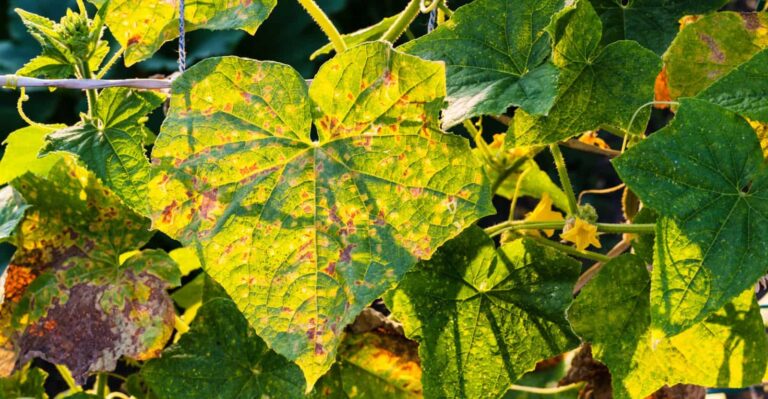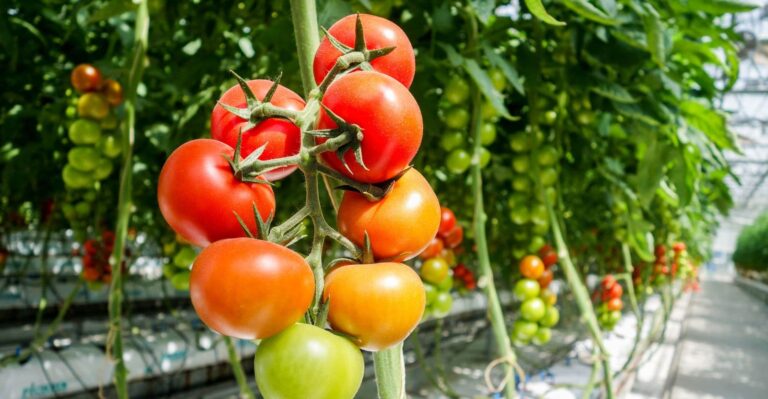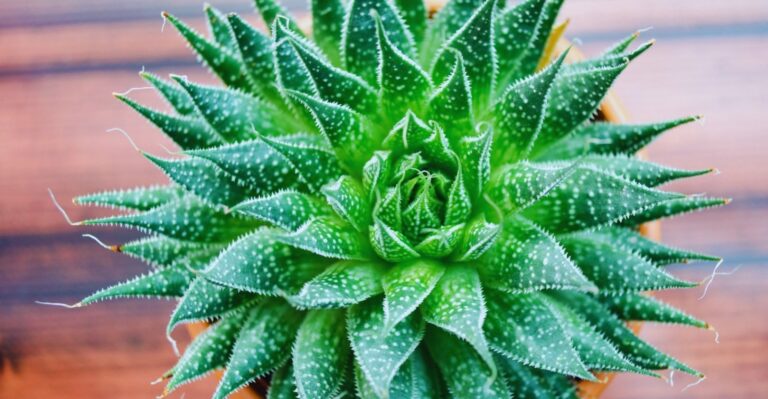Amazon has put together some great Home Gift Deals – save money and get your shopping done at the comfort of your home! Click here to see deals on Amazon
When I was growing up, I often saw lemon in a bin while passing through the kitchen, but I can’t say I ate many of them. But as I grew up, I liked the taste of lemon and the several health benefits.
As an experiment, I had successfully grown two lemon trees from seed, but they died after a year. I have done further research and determined that I overwatered them that caused the root to rot, and the tree eventually died off.
I’m sure that I’m not the only one who had made the same mistake. Lots of people look for the right comprehensive information on how to grow a lemon tree from seed. You can learn from mistakes and follow this guide to grow it successfully.
However, I won’t recommend growing citrus trees such as lemon from seed for two reasons. It usually takes longer than several years before the plant gets mature enough to fruit. And most times, the fruit quality may not be as good as the lemon that you just tasted.
If you want a faster result and quick fruits, then start it from a seedling that you can buy from local garden stores or online plant retailers. It’s more so if you want to plant it indoors and nicely fit inside the room.
However, growing your plant from seed is fun, and let’s find out how you can grow it successfully.
Why should you grow a lemon tree?
Having a lemon tree in your yard or indoors has several benefits. It contains glossy leaves, fragrant flowers and can be grown from small to medium size plant. You can plant it indoors or take it out and let it rise in the garden.
It’s fun to experience growing lemon that is a very high source of vitamins and minerals such as calcium, magnesium, and potassium.
You can plant several companion plants along with a lemon tree. Herb plants such as Basil, Thyme, and Rosemary are great plants to grow along.
A full-grown lemon tree can annually produce up to 250 kg to 280 kg lemons when planted outdoor. The lemons are also natural insect repellent that keeps bugs away without needing to use any harmful chemicals inside your home.
You don’t have to use lemon just for eating. The high acidity in lemon makes it an excellent material for cleaning. With a lemon tree at home, you don’t need to buy a lemon from the market and can use it whenever you need it.
How to grow a lemon tree from seed
When you’re ready to plant a lemon tree, you need to have a high-quality healthy organic lemon. Avoid using hybrid non-organic lemons as the seeds are often infertile and won’t germinate.
You should also know the climate and hardiness zone in your area. The lemon trees are sensitive to cold weather and grow well in the 9 to 12 hardiness zone. So, if you live in an area that isn’t suitable to plant it outdoor, you can plant a dwarf indoor lemon plant in a small pot or container.
If you live in a hot sunny region, then you can make arrangements to plant it outdoor. The Meyer lemon variety is the easiest to grow and is recommended if this is the first time, you’re growing a tree from seed.
The Meyer lemon tree doesn’t grow very tall and is suitable for indoor gardening.
To get started gather the following items:
- Healthy organic lemon
- Potting soil
- Container/pot with a drainage hole that is 5 to 6-inch deep
- Lighting (artificial or natural)
- Fertilizer for citrus plants
Directions to grow a lemon tree from seed
Step 1: Choose a lemon and carefully horizontally cut it from the bottom. It prevents slicing seeds in the middle of the fruit. Using a finger, rip the outer lemon layer and squeeze out the seeds.
Step 2: Wash the lemon seed in the bowel and clean it properly. Inspect seed, and remove any rotten or soiled seed. You only want firm and healthy lemon seeds to begin. You can then wrap the cleaned seed in a paper towel.
Step 3: Moisten the potting soil mix lightly and fill it in a smaller pot. Don’t press the soil in the pot and keep it loose, so there is good airflow inside it.
Step 4: Pick the seed and cut the top hard layer to expose the seed. It helps the seed to propagate quickly. Then bury the seed around half an inch deep in the potting soil. You can plant 4 to 5 seeds in each pot at a 1.5 to 2-inch distance.
Step 5: Lightly moisten the topsoil by spraying little water at the top.
Step 6: Covert the pot with a clear plastic wrap and seal it with a rubber band. To allow the air to circulate inside the container, make a couple of small holes in it.
Step 7: Place the pot where it can get enough sunlight. You can place it near the window or use a growing light to help germinate the seed.
Step 8: Keep the soil moist all the time. Don’t overwater it, and spraying lightly once a day should be enough. You can also include fertilizer such as organic compost or use 2-1-1 rated fertilizer to help provide the seeds with proper nutrients.
Step 9: It takes around two weeks for the seed to start sprouting. You can remove the outer plastic cover and place the plant where it can get enough sunlight.
Step 10: Once you have a sizeable lemon sprout, you can either plant it outdoor or transfer the little sapling into a bigger container.
Here is a short how to grow a lemon tree from the seed video.
How many seeds are in a lemon
A full-grown, mature lemon fruit has anywhere 14 to 16 seeds in it. Some lemons may have no seed at all, as these are hybrid lemons and known as seedless.
You can’t use these lemons to obtain seed or plant a lemon tree from it.
Read More: Why is a Sunflower Yellow (and tips for caring it)
Can you plant lemon seeds from a store-bought lemon?
You can use a store-bought lemon to obtain its seed and plant it. But you have to make sure that you’re picking the right variety and choose the organic non-hybrid lemon to obtain seed.
You should buy it from a reputable garden center for higher success in a growing lemon tree. However, growing citrus trees from any lemon fruit may not be a good idea if you plan to grow edible lemons.
It’s because the seed from a store-bought lemon may unlikely produce a high-quality lemon tree that produces delicious lemon. The citrus trees are grafted at the rootstock that produces the desirable characteristics of the lemon.
If you try to grow lemon from the seed of the store-bought lemon, such as Meyer lemon, you may get thorny, small, and low-quality lemon fruit.
How to germinate lemon seeds in a paper towel
You can readily germinate lemon seeds in a paper towel. To get started, you need organic lemon that is ripe and healthy, a paper towel, potting soil, a zip-lock bag, and a pot.
Steps when germinating lemon seeds in a paper towel:
- Carefully slice the lemon and remove the seeds. Make sure that you don’t accidentally cut the seeds.
- Choose 4 or 5 healthy-looking seeds and clean it properly to remove any pulp and dry it with a paper towel.
- Remove the outer seed layer and take the seed out. The lemon seeds are very slippery and shiny brownish and green. Remove any damaged or rotten seeds and separate the healthier seeds.
- Wrap seeds in a paper towel and spray it lightly with clean water. Wrap the plastic sheet and place it in a zip-lock bag. Make some holes in the bag to let the airflow inside the bag.
- Place the bag with seeds at a warm shaded spot. Don’t place it in direct sunlight but put it where it can get enough sunlight (around 6 to 8 hours).
- Keep spraying the paper towel with water at least once a day to keep it moist.
- It takes 2 to 3 weeks for the seed to germinate and ready to be planted in soil.

How do you plant a lemon seed after germination?
Once the seeds have germinated, you can decide whether to plant it indoor or outdoor. Regardless, you need to prepare soil and pot for each seedling.
Once the plant has matured 5 to 6 inches tall, you can transfer it outdoor in the ground or plant it in a bigger container. To plant a germinated lemon seedling, you can use either terracotta or a plastic pot.
Ensure the pot is big and deep enough to allow the roots to grow properly. Any container around 4 inches in diameter and 5 inches tall should be sufficient to plant the seed.
Gently spray the water in the potting mix and fill the pot. Don’t press the soil and let it remain loose. Select the healthier and stronger germinated seed and place a single seed in each bowl.
If you’re using a bigger pot and want to plant multiple seeds, then maintain a 2 to 3 inches distance between each seed. In approximately three weeks, the lemon tree gets 3 to 4 leaves growing at the top.
Place it where it can get enough sunlight but don’t get burned with intense sunlight. Keep watering it intermittently within two days, not to let the soil get dry.
How long does it take to grow a lemon tree from seed and fruit time?
When you’re germinating lemon seed, it takes 1 to 2 weeks for it to grow. Later it takes anywhere from 3 to 4 weeks before it gets ready to be planted outdoor or transplanted in a bigger pot.
It then takes from 8 to 10 years for the lemon tree to grow and mature enough to start producing fruit. Some lemon varieties may need a longer time more than ten years to fully mature and produce edible fruit.
If you’re buying seeds from a reputable garden nursery, you may get more accurate information regarding the germination and producing fruit timeline of the plant.
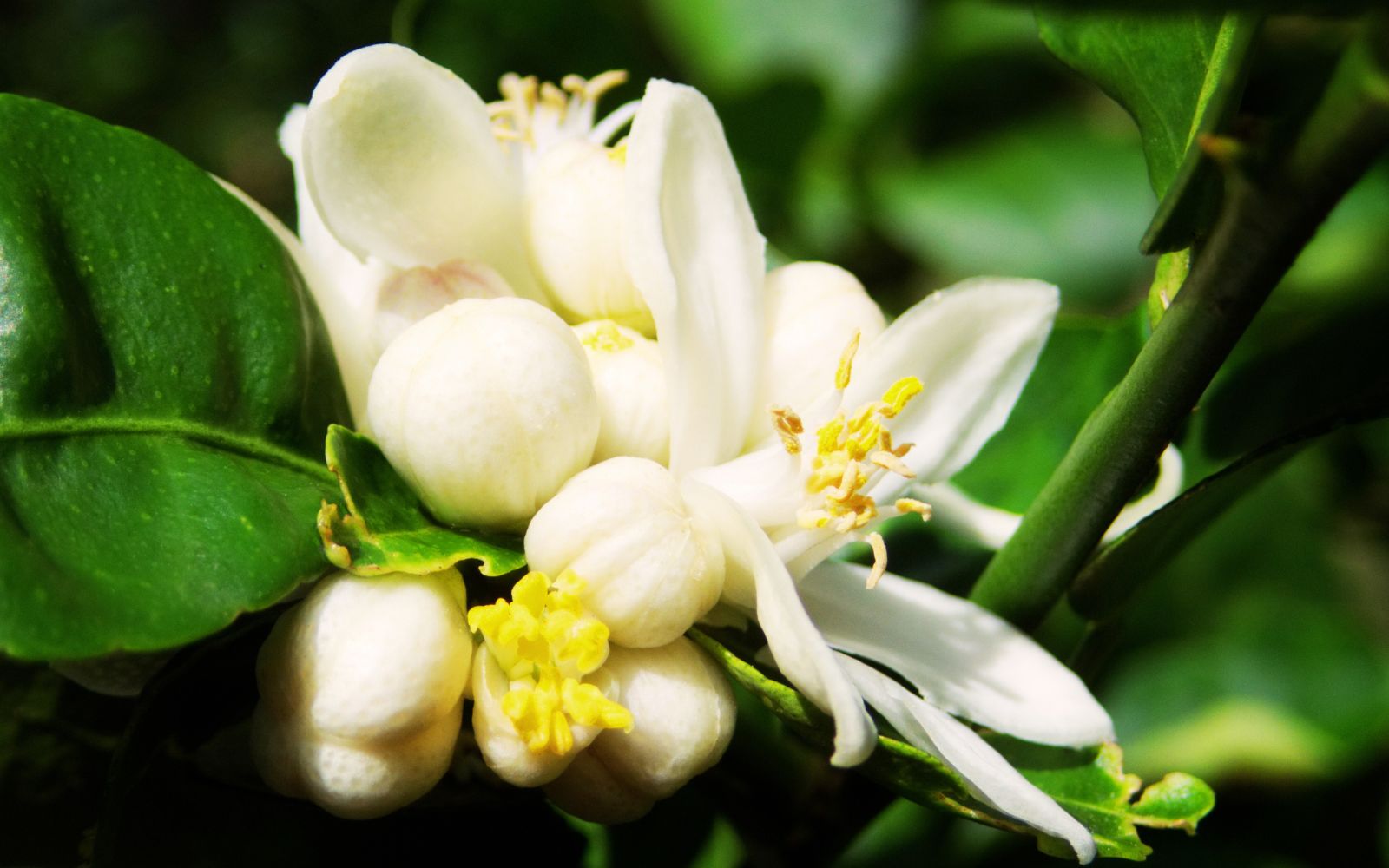
Do lemon trees grown from seed produce fruit?
It depends on the seed variety and the growing condition that you may be able to provide. It’s a bit unpredictable to know the fruit quality from a seed-grown lemon tree.
It may not exactly taste like the original fruit due to the different genetic makeup of the seed than the original plant itself. Most lemon seeds are grown on a plant that has been grafted to produce a disease-resistant and high-quality plant.
It means that the lemon has different genetic makeup than the original plant. And as a result, the seeds produce different trees altogether.
So, in short, do lemon trees grown from seed produce fruit? The answer is yes, but don’t expect it to have the same quality and taste as the parent tree.
How to grow a lemon tree indoors
To plant a lemon indoors, you need to have some preparation done. Use potting soil and mix it with perlite and coconut coir. Mix it properly and get small granular soil that allows water to pass quickly.
You can add a little sand to increase the soil’s ability to hold on to water. You can then mix it with citrus-ready fertilizer.
The lemon tree won’t require much fertilization, and ideally, you need to fertilize it twice a year. Initially, feed the plant in spring and summer once then don’t fertilize it in the fall.
Don’t fertilize the tree when it starts flowering as it stresses the plant. Excessive flowering causes the plant to produce weak or small-sized lemon fruits.
The lemon tree likes a bit more acidic soil. You should strive to maintain the soil pH level between 5.5 and 6 as it encourages growth. You can use a soil pH meter and amend the soil accordingly.
Place the plant where the temperature remains above 45 degrees Fahrenheit. Too cold temperatures may cause the leaves to get yellow and fall off.
For fruiting, the lemon tree needs 5 to 6 hours of sunlight. The lemon tree won’t fruit without enough sunshine.
If the tree isn’t big enough, then you can place it outdoor in summer to get the proper sunlight. Make sure you don’t overwater the plant as lemon trees are more prone to root rot.
You will know that you’re overwatering if the leaves start falling and look weak. Poke your finger two inches in the soil, and if it’s dry, then only water it.
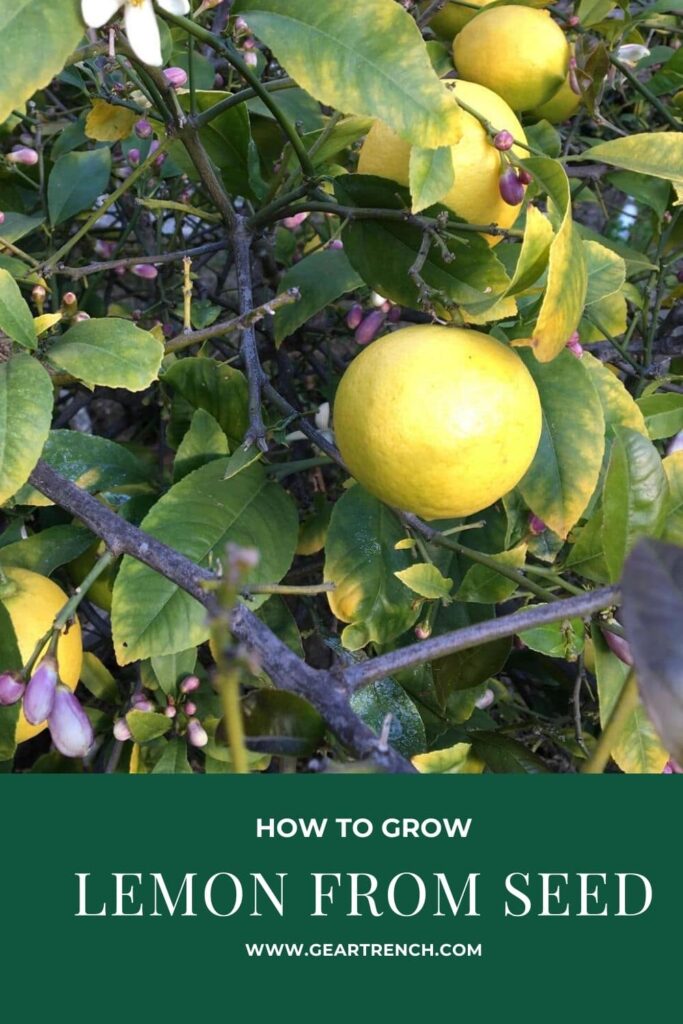
Don’t forget to share this post



